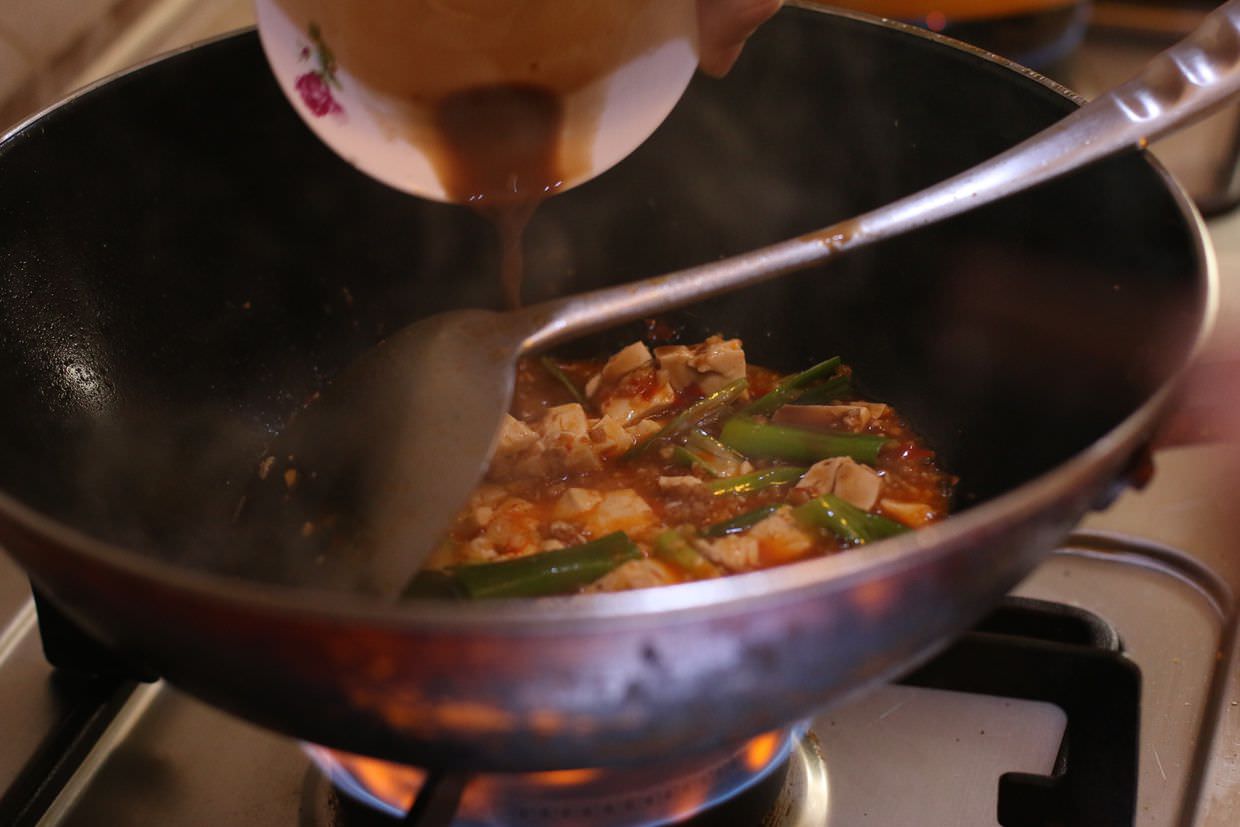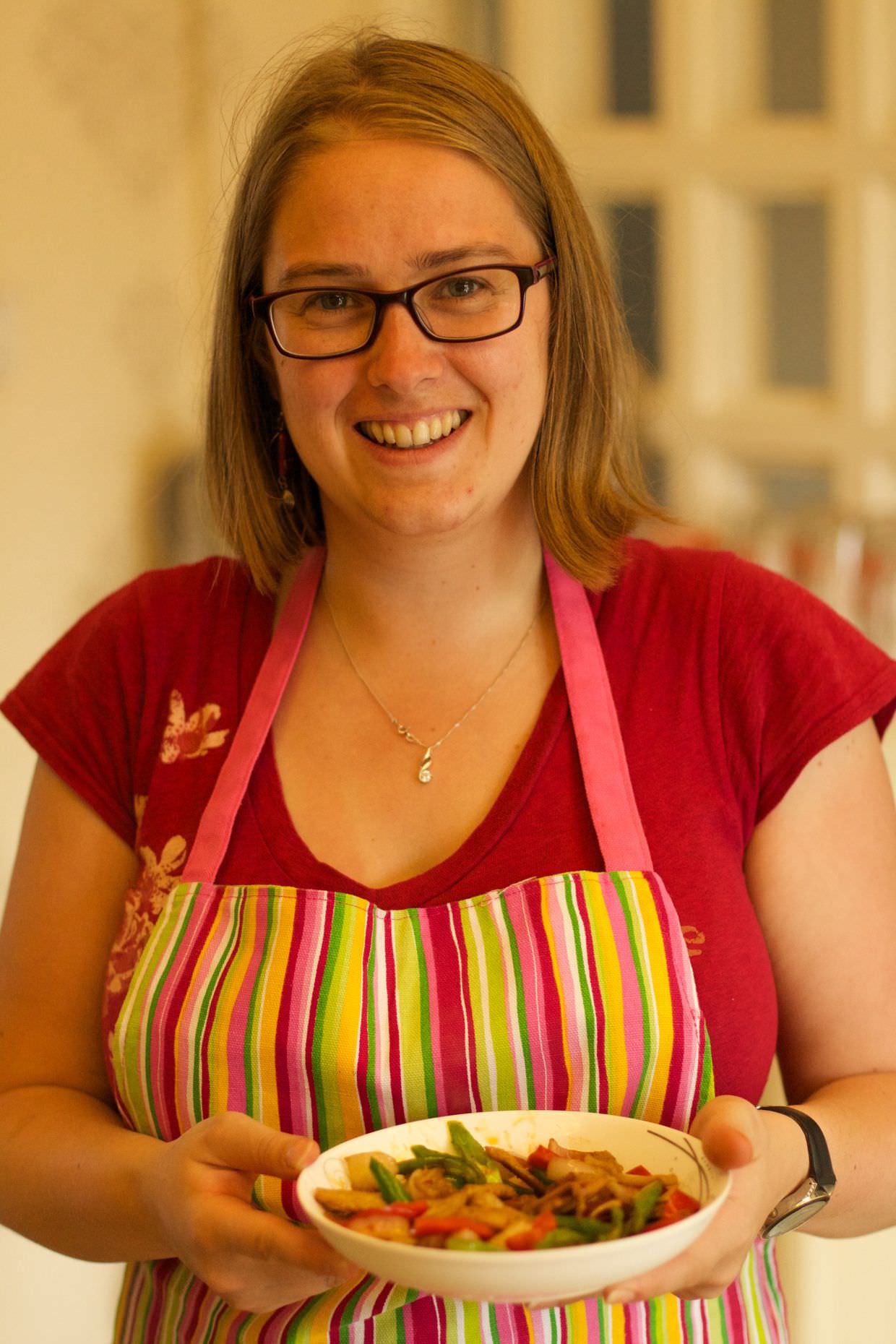Sichuan cooking course
Samtour Sichuan cooking course
From the Chengdu base we headed across town to “Sam’s” house, Sam of Sam’s tour and guesthouse fame, not Samantha, for a Sichuanese cooking course. It was a private cooking course, just Sam and his wife, and the two of us. Sam lives on the top floor of one of Chengdu’s many towering apartment blocks and it was interesting to see inside one of these new builds. The kitchen and dining area were beautifully decorated.
We hadn’t planned this course ourselves, we’d booked it as part of our whole trip with Rickshaw travel (China travel plan), so we weren’t sure what to expect. We try and give ourselves at least one cooking course for every trip, it’s a great way of learning about culture, seeing how the average family lives and it gives you a skill to bring home at the end of it. With all the courses we’ve done; Borneo, Thailand, Vietnam; this was one of, if not the best. The dishes were all exciting, quick, delicious and very easy to reproduce at home (our first week home all we did was cook these recipes — we want to continue eating spicy Sichuan food and are looking to be more adventurous with the techniques).
Today we’d be cooking four classic Sichuan recipes: Gongbao chicken (or Kung Pao, Kung po, 宫保雞丁), Mapo Tofu (or Mapo doufu, 麻婆豆腐), Twice cooked pork (Huí Guō Ròu, 回鍋肉) and Chengdu dandan noodles (dandanmian, 担担面).

For each dish we prepared the ingredients together; learning that slicing the root ginger without peeling it first is fine, discovering “lettuce cubes” which I think were cubes of luffa — it’s just like cucumber really, and realising that of course every Sichuan dish has some soy sauce in it, if not chillies, cornstarch, sugar and salt too. When that dish’s ingredients were ready Sam would show us how to cook them then each of us would have a go, before sitting down to eat our food with a hot glass of whole-leaf jasmine tea.

Mapo Tofu, our first dish was scrumptious — especially given that we tend to not like tofu. Its boiled tofu which is added to toasted minced pork along with ginger and garlic, followed by a homemade chilli bean paste, some spring onions and a sichuan peppercorn powder. Possibly the best tofu we’ve ever eaten, definitely the best we’ve ever cooked. Next, Gongbao chicken is a dish with cubed chicken pieces fried together with cucumber, spring onions, ginger, garlic, dried chillies and famous Sichuan peppercorns. Soy sauce and vinegar are added at the end, along with pre-prepared crispy fried peanuts. Twice cooked pork is delightfully simple; (fatty!) pork boiled, cooled then sliced and fried. Its fried with large green chillies and extra chilli paste, with a sprinkling of sugar. We watched Sam cook the last dish, dandan noodles with minced pork, more ginger and chillies. As said, it’s simple, fast and tasty.

We picked up a lot of useful tips along the way too. When you cook the pork for twice cooked pork, we used chopsticks to see when it was ready. We learnt how to make really tasty fried peanuts; skin on nuts slow cooked in cold oil on a low heat until they begin to ‘pop’ then let them cool — when you want to eat them you quickly fry them up and they go nice and crispy (also good with salt and chilli powder!). When cooking large spicy green chillies you can dry fry them beforehand to reduce the spiciness and make them a bit sweeter; you can also add sugar and salt to these to make “tiger skin pepper” (the backs go a streaky black). There’s also a saying about Chinese cuisine; in the north the food is salty, in the south its sweet, in the east its sour and in the west, here in Sichuan, its spicy. “Ooh, too spicy”, Sam coughed as he ate a dish he’d prepared — sometimes its even too spicy for the locals.



Tea in Chengdu
One of the best things to do in Chengdu is buy and drink tea, back from our cooking course — having guzzled many pints of tea, we wanted to find some of our own. Chengdu is famous for its many teahouses, and our guidebooks recommended lots. We didn’t go to any of those in the end, but we did find a lovely little tea shop to buy some from. We avoided Qintai street and headed to the streets near the park which have shops that are reasonably priced. While I was relaxing in the park Samantha found a lady who could understand some English and could speak a bit of broken English back to us; she showed Sam a price list — different jasmine teas ranging from small and dried 8¥/50g to large leafed and refrigerated 65¥/50g (about £6.50).
Excited, Sam ran back to the park, grabbed my arm and we rushed back to try a range of teas. The lady diligently prepared some tea for us to taste; first she warmed the glasses, then she boiled the water and let it cool a little. The tea table had neat little holes to let the boiling liquids pour away safely as she covered everything with water from the kettle. We tried the 18¥, the 28¥ and the 55¥ versions; the 18 and 28 were similar and tasted great, but the 55 was sublime. Of course in China you re-use your tea leaves and she made us more cups so we could try how the leaves taste on a second and third brew; the third is often the best. We ended up buying a bag of the refrigerated whole-leaf 55¥ variety, named huamaofeng the leaves are young and it includes some petals too. We’re still drinking it back at home. Sam took the opportunity to buy some more tea-ware too. And we also came away with some blue hand painted Chinese tea cups and complimentary tea scoop and pu-er.
In the evening we had a small meal of crispy barbecued pork ribs and a pizza, because we’d already eaten enough for a week! We sat outside at the Wenjun mansion hotel, in the lovely courtyard. Behind us a large TV was showing a guide to Chinese cuisine; people in Xi’an were making Chinese hamburgers.
A quiet day in Chengdu

After our second visit to the pandas in the morning we didn’t do much with the day. Most of Chengdu’s activities are a drive out of town, so we packed our bags, I wrote this blog a bit and Samantha explored the people’s park some more. I missed out on that, as she saw how the park was used on a Sunday; families were there together enjoying tea, ladies were singing bad opera, old men were arguing about art, a man was painting calligraphy on the pavement with water, people were playing games, and a workshop was showing children how to paint bamboo and learn calligraphy — something that inspired Samantha to learn too in Yangshuo.
For lunch we stayed in the hotel, and we tried a restaurant made twice-cooked pork (now so much more appealing!) along with some special fried rice and spicy shrimp (which was missing some promised beef).

Around 6pm we said our goodbyes to other couples we’d met at the hotel; a couple of other Rickshaw travellers who were heading home now, and a British couple who were fascinated with wildlife and had been to an exclusive sunbear sanctuary because of their charity contributions. Next stop, a relaxing stay in the natural wonder that is Yangshuo.
